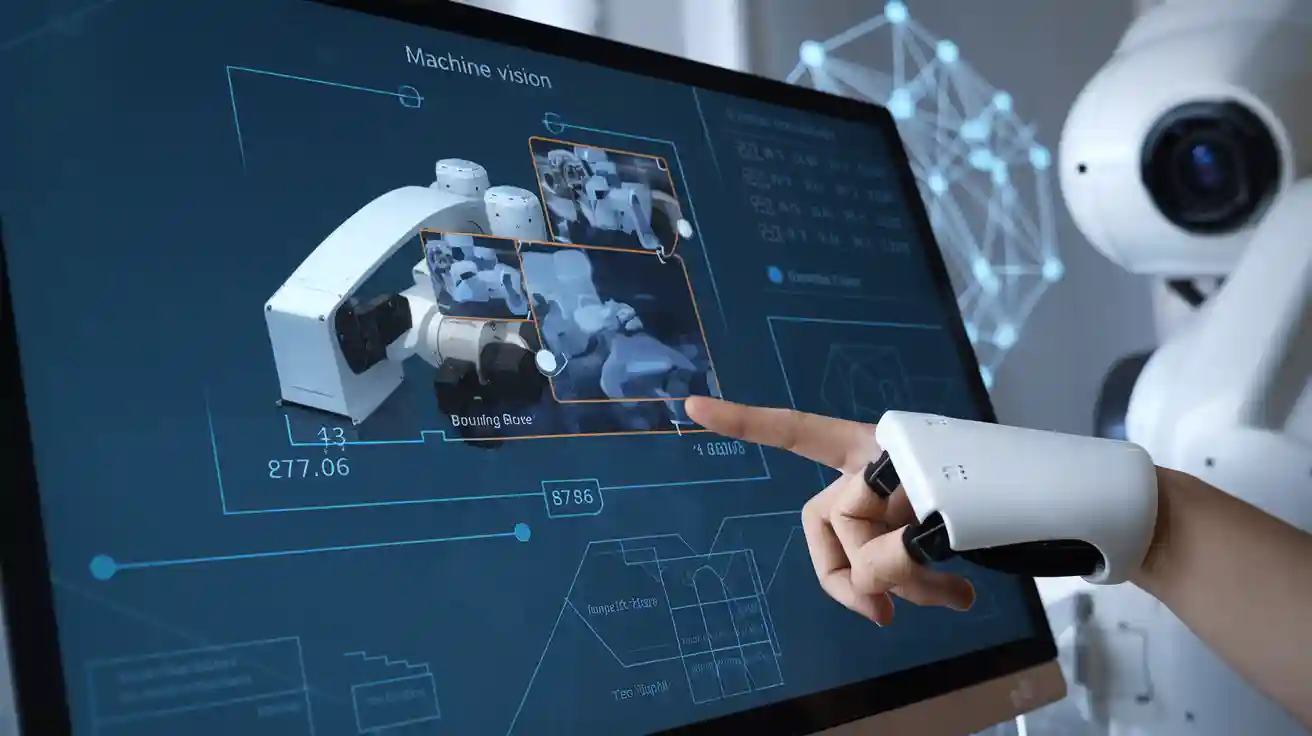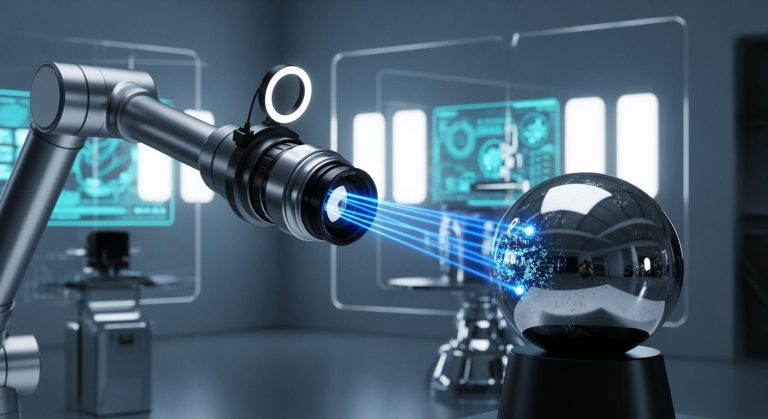
The null annotation machine vision system sets a new standard by treating data with unmatched precision. This system never confuses missing data with intentionally null data. Each piece of data receives careful attention, which helps the system avoid common errors in data labeling. Engineers rely on this approach to ensure data clarity. The system processes data so that every data point, even if null, carries meaning. Data integrity improves, and models trained on this data achieve higher accuracy. Manufacturers trust this system to handle data from real-world environments, where data noise and gaps often lead to mistakes. With the null annotation machine vision system, every data detail matters.
Key Takeaways
- The null annotation system treats missing and intentionally empty data differently, improving data clarity and reducing errors.
- Automated annotation speeds up workflows by eliminating manual labeling, saving time and ensuring consistent, high-quality data.
- This system handles large datasets efficiently, making it scalable for real-world projects with complex data.
- Using null annotation boosts model accuracy by increasing true detections and lowering false positives.
- Null annotation systems deliver faster processing and more reliable results than traditional manual annotation methods.
Null Annotation Machine Vision System
Key Features
The null annotation machine vision system introduces a new approach to handling data in computer vision. Unlike traditional systems, it does not require manual annotations for every data point. Instead, it uses preprocessing to convert point cloud data into an Altitude Difference Image (ADI). This step removes the need for manual labeling and speeds up the entire workflow. The system also uses tolerance-based evaluation, which considers detections within a certain range as correct. This method improves the accuracy of nullness annotations and reduces errors caused by unclear data.
The distinction between null annotation and missing annotation is crucial. Null annotation means the data point is intentionally marked as having no object or feature, while missing annotation means the data point was overlooked or not labeled. This clarity helps the system avoid confusion and ensures that every piece of data is processed correctly.
The table below highlights the technical differences between the null annotation machine vision system and other annotation systems:
| System Type | Input Data Type | Annotation Required | Key Technical Feature | Performance Highlights |
|---|---|---|---|---|
| Traditional Methods | Point Cloud | Yes | Use raw point cloud data with manual annotation | Precision ~85-91%, FPS 16-33 |
| Learning-based Methods | Point Cloud | Yes | Deep learning on point clouds with annotations | Precision ~90-96%, FPS 16-35 |
| Null Annotation System | Altitude Difference Image (ADI) | No | Converts point clouds into ADI, eliminating manual annotation; uses tolerance-based evaluation | Precision ~94-96%, FPS 58-101, comparable or superior accuracy and much higher speed |
The null annotation machine vision system stands out by delivering high precision and faster processing speeds. Its preprocessing step ensures that nullness annotations are handled with care, leading to better model performance.
Automated Annotation
Automated annotation is a core strength of the null annotation machine vision system. The system uses advanced preprocessing techniques to reduce the need for manual labor. By converting raw data into ADI, it eliminates the repetitive task of labeling each data point. This approach not only saves time but also improves the consistency of annotations across large datasets.
- Automated annotation can save up to 80% of the total project time, especially when annotation tasks originally take a significant portion of the workflow.
- The system reduces human errors, making nullness annotations more uniform and reliable.
- Automated tools maintain high-quality standards through rule-based or supervised learning methods.
- Human experts can focus on complex cases, while the system handles repetitive preprocessing and labeling tasks.
- The cost and labor required for annotation decrease after the initial setup, making the process more scalable and efficient.
- Integration of human-in-the-loop AI further enhances quality control, ensuring high accuracy alongside faster annotation.
- The system supports large volumes of data, meeting the demands of modern AI projects.
Research shows that automated annotation systems can achieve up to 95% agreement with expert human labels. This high level of agreement means that models trained on these annotations perform almost as well as those trained on fully manual labels. The null annotation machine vision system leverages these advances to deliver fast, accurate, and consistent results.
Scalability
Scalability is essential for any modern machine vision solution. The null annotation machine vision system addresses this need by supporting large and complex datasets through efficient preprocessing and annotation workflows. In real-world scenarios, such as cloud telemetry analysis, systems must handle thousands of rows and hundreds of thousands of columns. The null annotation machine vision system uses dimensionality reduction and automated preprocessing to manage these challenges.
- Large-scale datasets, like those from IBM Cloud, show that machine vision systems must balance computational efficiency and model performance.
- The system uses preprocessing to reduce the complexity of data, making it easier to process and annotate.
- Regular retraining and iterative data collection cycles help the system adapt to evolving datasets.
- The system can detect significant anomalies in complex data, though distinguishing true issues from false positives remains a challenge.
- Best practices for integrating null annotation tools include:
- Include null images in the dataset to help the model learn when no objects are present.
- Collect relevant data aligned with the use case and define clear classes for the model.
- Label all objects tightly and accurately.
- Use iterative cycles to identify gaps and improve performance.
- Review annotations carefully to avoid mistakes.
The null annotation machine vision system supports scalability by reducing manual annotation effort and improving preprocessing efficiency. As a result, it can handle the demands of large-scale projects and deliver reliable nullness annotations across diverse datasets. The system also supports nullability annotations, which further enhance the clarity and reliability of data used for model training.
Accuracy and Reliability
Accuracy Improvements
Null annotation brings a measurable boost to accuracy in computer vision model training. When engineers use refined annotations, they see a clear difference in model evaluation results. The table below shows how accuracy improves when using refined annotations compared to original annotations in a defect detection dataset:
| Annotation Type | Recall Rate (%) | False Positive Rate (%) |
|---|---|---|
| Original Annotation | 85.33 | 49.60 |
| Refined Annotation | 96.07 | 16.50 |
This table highlights a recall rate increase of over 10 percentage points and a dramatic drop in false positives. These improvements mean that the computer vision model can identify more true defects while making fewer mistakes. Higher recall and lower false positive rates directly translate to better model performance during both training and model evaluation.
Null annotation also supports accuracy by ensuring that every data point receives proper attention. In many datasets, missing or mislabeled data can lead to confusion during training. By marking data points as intentionally null, the system prevents the computer vision model from learning incorrect patterns. This approach leads to more reliable model evaluation and better results in real-world scenarios.
Healthcare, finance, and retail datasets benefit the most from this strategy. In healthcare, accurate data annotation prevents errors in diagnosis. In finance, it helps avoid reporting mistakes. In retail, it keeps inventory and sales data reliable for supply chain management. Each of these fields relies on precise data handling to maintain high accuracy and performance.
Reducing Annotation Errors
Reducing annotation errors is essential for strong model performance and reliable model evaluation. Null annotation strategies target the most common sources of error in data labeling. These strategies include:
- Reducing null pointer dereferences, which often cause system failures.
- Using annotations like @Nullable and @NonNull to help static analysis tools catch null safety issues before deployment.
- Employing tools such as NullAway to focus on null safety and detect potential problems early.
- Applying module-level annotations to enforce non-null defaults, which improves consistency across large datasets.
- Clarifying developer intent, which reduces annotation misuse and increases code safety.
By addressing these issues, null annotation strategies improve both training and model evaluation. When annotation errors decrease, the computer vision model can learn from cleaner data. This leads to better model performance and more reliable predictions.
A recent study shows that using advanced annotation methods, such as large language models with retrieval-augmented generation, reduces annotation errors compared to older text-mining approaches. These methods select fewer but more precise annotations, which lowers false positives and raises the quality of the data. As a result, downstream model performance improves, with gains in recall, precision, and semantic similarity. This evidence confirms that reducing annotation errors through null annotation leads to better outcomes in computer vision model training and evaluation.
Tip: Focusing on null safety throughout the annotation process helps teams catch errors early, saving time and resources during model training and deployment.
Null annotation not only improves accuracy but also strengthens the reliability of computer vision models. By handling null and missing data correctly, teams can trust their model evaluation results and achieve consistent performance in real-world applications.
Computer Vision Model Impact
Model Training
Null annotation changes the way engineers approach computer vision model training. When they use clear labels for every data point, the model learns to distinguish between real objects and empty spaces. This process improves data quality and helps the computer vision model avoid confusion during training. Engineers see better model performance because the system does not treat missing data as a mistake. Instead, it recognizes that some data points are intentionally empty.
During training, the system processes large amounts of data quickly. Automated annotation tools reduce the time needed for manual labeling. The computer vision model receives consistent input, which leads to higher accuracy. Data quality remains high because the system checks each data point for correctness. As a result, model performance improves with each training cycle. Engineers can trust the results and move forward with model deployment.
Real-World Applications
Many industries use computer vision model systems with null annotation to solve real problems. In manufacturing, these systems help with fault detection, inventory management, and safety monitoring. They also support quality control and predictive maintenance. Robotics teams use computer vision model training for robotic guidance and assembly verification. These applications improve performance and ensure high data quality.
- Quality control tasks include defect detection and color verification for products like labels, wires, and capsules.
- Engineers use edge detection and color sensing to check product quality.
- Educational projects show students training computer vision models on platforms like Raspberry Pi and Google Colab.
- The systems work well in tough conditions, such as poor lighting or occlusions.
Companies see better model performance and faster results when they use null annotation. They can handle more data and keep data quality high, even in complex environments.
Comparison with Other Systems

Key Differences
Null annotation machine vision systems differ from traditional annotation methods in several important ways. Traditional systems often require manual annotations for every piece of data. This process can introduce errors and slow down workflows. Null annotation systems use automated preprocessing to handle data more efficiently. They convert raw data into structured formats, which reduces the need for manual input.
- Traditional annotation methods may confuse missing data with intentionally null data. This confusion can lead to inaccurate results.
- Null annotation systems clearly mark when data points have no object or feature. This clarity improves the quality of annotations.
- Automated workflows in null annotation systems process large volumes of data quickly. Manual systems struggle to keep up with this scale.
- Benchmarks in scientific fields show that objective comparisons help users select better tools. Standard benchmarks also encourage technical progress and community agreement on best practices.
A table below summarizes the main differences:
| Feature | Traditional Systems | Null Annotation Systems |
|---|---|---|
| Annotation Process | Manual | Automated |
| Handling of Data | Prone to confusion | Clear distinction |
| Speed | Slower | Faster |
| Annotation Quality | Variable | Consistent |
| Scalability | Limited | High |
Why Choose Null Annotation
Many teams now prefer null annotation systems because they deliver higher accuracy and adaptability. These systems reduce annotation bias, which often leads to false positives in traditional approaches. For example, older methods like Fisher’s Exact Test can produce errors when working with highly annotated data. Newer protocols use randomization to build a null model based on annotation overlap. This approach eliminates bias and produces more reliable results.
- Null annotation systems provide more relevant and trustworthy annotations for model training.
- Automated processes ensure that data is handled consistently, even in large datasets.
- Comparative studies show that using benchmarks with gold standards improves reproducibility and accuracy.
- Teams can trust the results from null annotation systems during model deployment.
Null annotation systems help organizations achieve better outcomes by focusing on data clarity and annotation quality. They support rapid technical progress and set new standards for accuracy in computer vision.
The null annotation machine vision system delivers high accuracy and reliability. Engineers see strong agreement between consumer-grade and professional systems, with mean merit score differences as low as 0.4 mm and correlation coefficients above 0.97.
- Portability, cost-effectiveness, and easy setup make these systems practical for many industries.
- Teams report improved computer vision model performance, especially in tasks that require precise object detection and reduced confusion between similar items.
As AI and robotics advance, companies will rely more on these systems for quality control and real-time analysis. The future looks bright for computer vision model innovation.
FAQ
What is the main benefit of using null annotation in machine vision systems?
Null annotation helps engineers mark data points that have no object or feature. This process improves data clarity and reduces errors during model deployment. Teams see better results because the system avoids confusion between missing and intentionally empty data.
How do nullness annotations improve model accuracy?
Nullness annotations ensure that every data point receives a clear label. The model learns to recognize empty spaces and real objects. This approach leads to higher accuracy and fewer mistakes during both training and model deployment.
Why are nullability annotations important in large datasets?
Nullability annotations help teams manage complex data. They show which data points can be empty. This information keeps the system organized and supports null safety. Engineers can trust the results when working with large or changing datasets.
How does null safety affect computer vision projects?
Null safety protects systems from errors caused by empty or missing data. It helps engineers catch problems early. This practice leads to more reliable model deployment and better performance in real-world applications.
Can automated annotation tools handle model deployment challenges?
Automated annotation tools process data quickly and consistently. They support model deployment by reducing manual work and improving data quality. Teams can scale projects and maintain high standards with these tools.
See Also
Key Benefits Of Machine Vision For Detecting Defects
A Comprehensive Guide To Object Detection In Machine Vision
Comparing Firmware Based Vision To Conventional Machine Systems
An In Depth Look At Cameras Used In Machine Vision
Ensure Flawless Detection Using Verification In Machine Vision








